Tribal Energy
Timothy Salaz uses his Tamron 17-28mm, 28-75mm, and 70-180mm F/2.8 Di III VXD lenses for Sony mirrorless cameras to capture Native American dancers in action.
More Photo Tips | Video Gallery | Photo Gallery | Enewsletter sign-up
By Jenn Gidman
Images by Timothy Salaz
Before he ever picked up a camera, Timothy Salaz was a dancer for Carnival Cruise Line—but that’s exactly what made him pick up a camera in the first place.
“I wanted to film myself dancing on the different islands we sailed to,” he says. “I had a lot of downtime on the ship, so I downloaded more than a hundred hours of educational content on exposure, lighting, and how to use my camera. I would not only film myself, but I’d also take photos of the other dancers to develop my photography skills.”
Timothy moved to Nevada after his cruise line stint, and he started taking pictures of dancers and performers on the Las Vegas Strip. Although he still performs himself, photography and creating content for others now takes up the lion’s share of his time. “It’s been a nice change of pace for me as an artist and creative type, and I appreciate not having all of my eggs in one basket from a financial standpoint,” he says.
Because of his penchant for both dance and photography, Timothy didn’t hesitate when asked to head to North Dakota to photograph dancers from the Lakota, Nakoda, Dakota, Seneca, Mandan, Hidatsa, and Arikara tribes. “Except for one of my subjects, my subjects were all from the same family,” he says. “They’re professionally trained powwow dancers, and even though my background is a different kind of social dance—primarily street dancing—there are certain elements that are similar, and we shared a connection. It made it easier to strike up a rapport with my subjects and figure out how to photograph them.”
For his photo shoot, Timothy used a trio of Tamron lenses: the 17-28mm F/2.8 Di III RXD, 28-75mm F/2.8 Di III RXD, and 70-180mm F/2.8 Di III VXD, all for Sony mirrorless cameras. “I do a lot of traveling and on-location work, so I love that I can fit all three of these compact lenses inside my camera bag and have such a full range of focal lengths to work with,” he says. “For me, a photographer’s style is often defined by the way he or she uses different focal lengths. I often like to do the reverse of what’s recommended—for instance, using a wide-angle lens for portraits. These three lenses allow me to maximize my creativity in that sense. The autofocus on all three is stellar, and the image quality is very impressive.”
Timothy didn’t want to take typical-looking portraits of his subjects. “When you see photos of Native Americans, they’re often these somber-looking, static photos,” he says. “That wasn’t my goal with these images. I wanted to capture the dancers in a full range of motion, against complementary landscapes, to show their essence as they performed.”
Being a dancer himself allowed Timothy to better direct his subjects on their makeshift stages. “Photographers who aren’t familiar with dance will often tell dance subjects to ‘just start dancing,’” he says. “And that can work in some cases. But it’s better if you give your subjects a destination or a goal, to say, ‘I want you to move from this point to that point over there,’ and then to capture them at the peak of their trajectory, in some kind of motion.”
Timothy also tried to be sensitive to how his subjects wished to be portrayed. “They put a lot of pride and care into making their dance attire, so I wanted to ensure I focused properly on that and that everything was correctly positioned,” he says. “For instance, the dancers want their feather plumes to be on straight at all times. I want to apply the same level of craftsmanship to my images of them as they do into creating these magnificent outfits.”
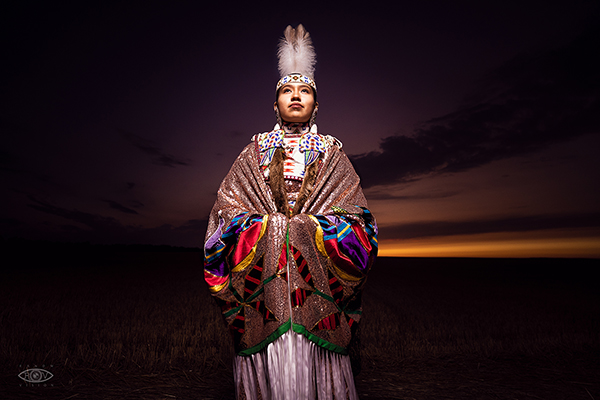
17-28mm (17mm), F/2.8, 1/640th sec, ISO 1000
Click image to view larger
Differentiating between the dance moves is also important. “The man you see decked out in the really colorful regalia is doing a type of dance called fancy dance, which typically features explosive dance moves using fringe and dance sticks,” he says. “Meanwhile, the other male dancer you see performs a style called grass dancing. You can see these forms of dance illustrated by two of my female subjects as well, and you’ll notice my different approaches in shooting these two types of dance.”

70-180mm (108mm), F/2.8, 1/640th sec, ISO 100
Click image to view larger
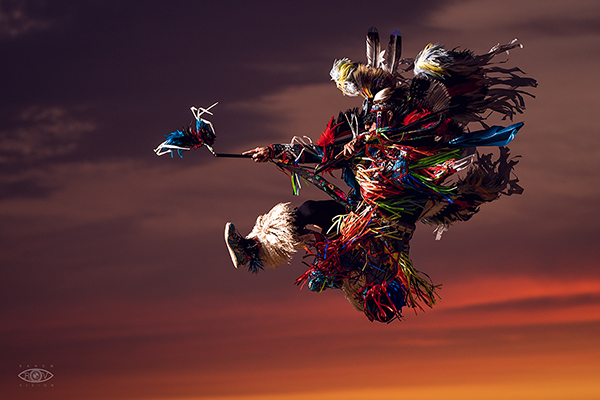
70-180mm (104mm), F/2.8, 1/640th sec, ISO 400
Click image to view larger
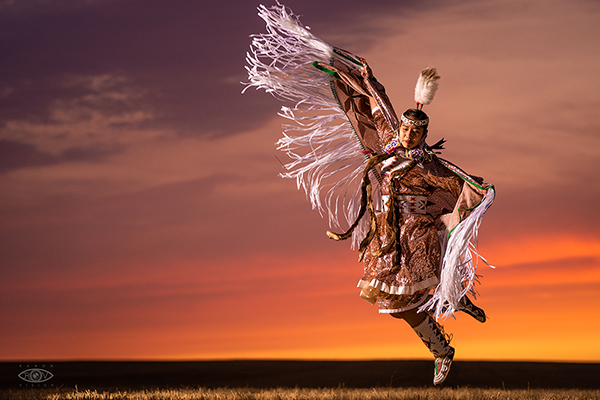
70-180mm (104mm), F/2.8, 1/640th sec, ISO 400
Click image to view larger
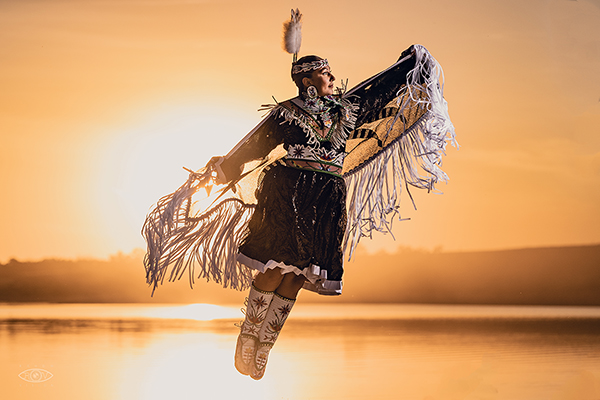
70-180mm (94mm), F/2.8, 1/5000th sec, ISO 400
Click image to view larger
Timothy uses ambient background light for what he calls his “decorative” lighting, supplementing that with a light source and light modifiers as “extra sauce” to make his subjects pop. “All of these photos, except the two of the little boy, were shot at sunset or a bit after sunset,” he says. “With the high-speed sync functions now available on the strobes, I can stop down to F/2.8 and not get any weird motion blur. I was also trying to match the background light when possible with the hues—like the yellows and golds—in their outfits.”
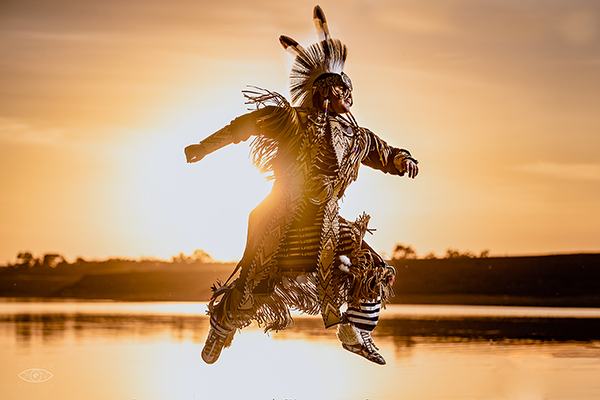
70-180mm (96mm), F/2.8, 1/5000th sec, ISO 400
Click image to view larger
Timothy also had the chance to photograph one of the family’s youngest members inside a tribal earth lodge. “This was the family’s second-youngest son, 3 years old at the time of the shoot,” he says. “He was dressed in his full fancy-dance attire, and I noticed there was dust floating in the air inside the lodge. I could tell which way the light outside was moving, so I positioned him in the center of my frame and waited until the light streamed in at that angle through the hole in the roof, then threw some dust in the air to create that grainy effect.”
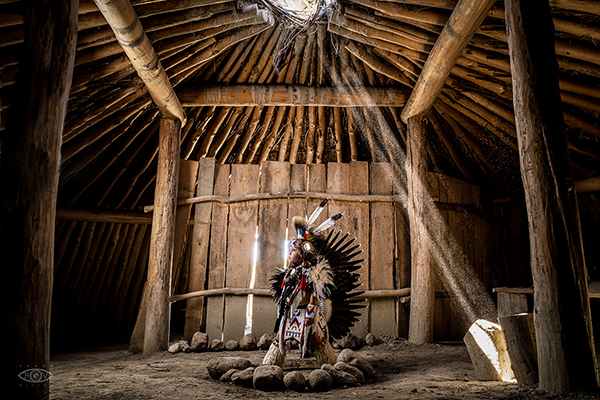
28-75mm (28mm), F/5, 1/30th sec, ISO 1000
Click image to view larger
For his final photo of the boy, Timothy got down low to the ground with his 28-75mm. “I often want to make my subjects look as big, bold, and epic as possible, as if they just stepped out of an action movie,” he says. “By shooting from a lower perspective, you can make your subjects look larger than life. The funny thing in this case was that, by showing him in this way, I almost forgot how old he was. He was so impressive as he was performing, but suddenly one of his feathers fell off. He started crying and I was thrown, until I remembered: Right, he’s just a little boy! You forget that when you see a photo like this, because it makes him look so strong and spectacular.”
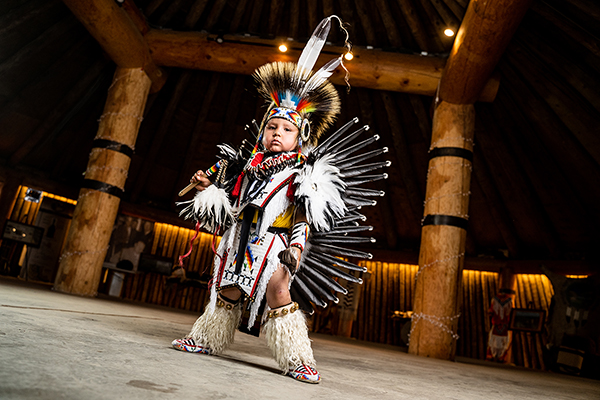
28-75 (28mm), F/3.5, 1/125th sec, ISO 800
Click image to view larger
To see more of Timothy Salaz’s work, go to www.randmvisionphoto.com or find him on Instagram.
More Photo Tips | Watch Videos | Learn More About Tamron Lenses | Photo Gallery
